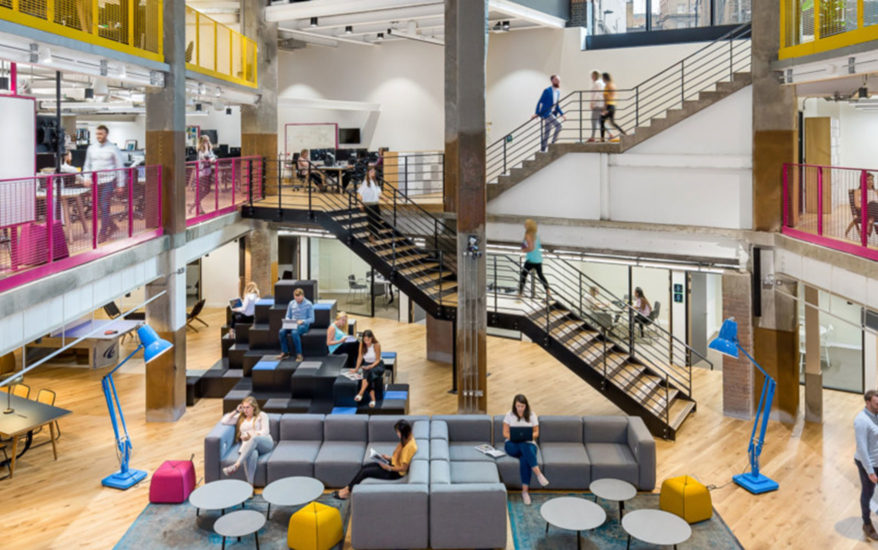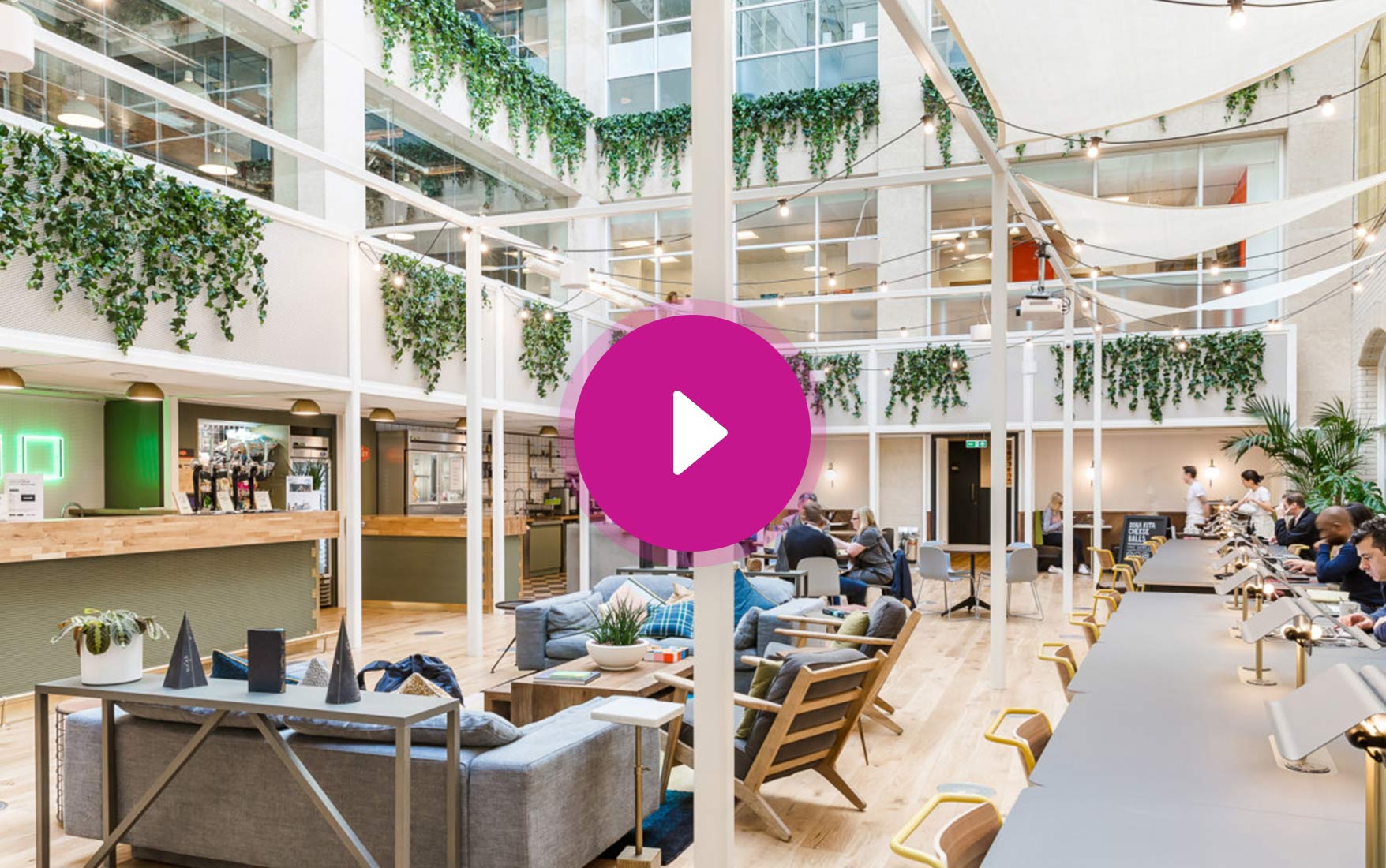
COVID-19 has been the catalyst for change, and has lead to conversations arising on productivity, collaboration and the big question around the future of our workplaces. Attitudes towards remote working have been completely challenged by this global pandemic, says JanJaap Boogaard, Head of EMEA Workplace Advisory, so what function will our office workspace perform in the post-COVID-19 world?
Social distancing measures will play a major role in defining how your physical office environment operates in the post-COVID-19 era. The layouts and designs used pre-pandemic, where employees worked at desks and in meeting rooms in very close proximity to each other, will no longer be appropriate, if they’re permitted at all. So your office is likely to need significant reconfiguration to enable a phased return to work that’s both safe and compliant.
Team culture, collaboration and productivity are key areas of consideration as to reintroducing your employees into this office set up; where face-to-face interaction can build on these principles even more than working remotely can.
“Now is the time to embed well-being into every aspect of the design and delivery of work itself and to fundamentally redesign work toward outputs instead of activities. This will open up the possibility for workers to both live and perform at their best.” ~ Erica Volini, Principal, Global Human Capital Leader, Deloitte Consulting LLP.
The initial space considerations
In the short-term, you will need to work out how many people your office space can safely accommodate at any one time. It may be as simple an exercise as blocking off every second desk to create a buffer between one worker and another. But it’s also worth considering more sweeping changes through desk management software to your layouts that may allow you to ensure a safe workable capacity.
These principles apply to your meeting rooms and utilising meeting scheduling, visitor and vendor management technology too. As a shared environment with collaboration at heart, these could be infection hot-spots if distancing isn’t maintained. Measuring out room dimensions and adjusting seating positions will help you define a safe (if somewhat reduced) capacity for each meeting space within your building.
However, it’s important not to rest on your laurels and assume that any particular layout you settle upon will always be the most suitable one. As your business needs change, your employees’ working arrangements evolve and as restrictions are adjusted, you may need to make continual modifications to maintain a balance between safety and business functionality.
Keeping control with technology
Your reconfiguration forms only a small part of maintaining an office that meets post-pandemic demands, not only from regulation but from employees who want to know that you take their health and safety seriously.
There are five keys to office design and your space function:
- Employee and workspace scheduling: with reduced office capacity, each worker needs to know when they’re expected in the office and where they’ll be seated.
- Capacity and density control: policing the reduced capacity limits applied to your workstation areas and meeting rooms, to ensure workers don’t accidentally or unnecessarily put themselves or others at risk/
- Effective sanitization: ensuring every area is fully cleaned after each individual use, and keeping cleaning staff informed on where they need to clean and when.
- Employee flexibility: staggering working shifts between office and home-working to account for the reduced office capacity, and accommodating employees who want to work remotely long-term.
- Contact tracing: being able to respond immediately if an employee shows any symptoms by keeping not only them out of the office environment, but anyone they’ve been in contact with too.
Managing all of this manually, on top of all their regular duties, would be impractical for your admin and management staff, if it’s even possible. The solution is a holistic approach based on software that can combine all of these needs into one adaptable, transparent, integrated workspace and employee management system.
A lasting change to your workspace
You may find that, with more employees wanting to work more flexibly going forward, the role of your business real estate will evolve. No longer would it be the place that everyone commutes to in order to complete their day-to-day tasks: it would become a focal point for collaboration, and only used for meetings or for presentations with clients, suppliers and partners.
In comparison it can be summarized as…
The office of yester-year:
- Mainly fixed desks
- Focus on maximizing capacity
- Less circulation space
- Technology tools that focus on increasing occupancy levels
- Supported mainly in-office workers and less mobility
- Some video conferencing tools
The office of today:
- More and safer distancing measures
- All flexible desks
- Technology tools to assist with booking space when needed
- Less occupancy
- Focus on safety, sanitization
- Analytics to understand needs
- Remote working
The workplace technology that you adopt for the office of today will prove its worth for your organization as we look ahead and move forward. By easily adjusting the nature of your office design and incorporating improved workspace technology, you can aid productivity and adjust to a ‘new normal’ with minimal disruption.
And in these uncertain times, minimizing business disruption has never been more important.
In a recent live webinar we hosted, in conjunction with our partners, Oktra, an award-winning office design company, we discussed these function requirements and space design for the future of our workplace in more detail. Watch the webinar here.
The webinar discusses the following key topics:
- The COVID-catalyst of office space change.
- The need to reassess your workspace, with examples of changes currently being asked for and already implemented.
- Important tools for advising your reintegration strategy and the resulting data that helps define your path forward.
- How to get back to consistent workplace operation by monitoring and assessing changing employee needs.
- Key considerations for your future space strategy and how to implement them.
- The workplace’s role in business performance and why it’s here to stay.
Oktra have also provided a wealth of materials to support in your office design planning for post-COVID-19, including this helpful guide.
References:
- Franklin, N., “Offices in the post lockdown era will focus on what they are good at.” Workplace Insights. June 16, 2020. https://workplaceinsight.net/offices-in-the-post-lockdown-era-will-focus-on-what-they-are-good-at/. Date of access. June 16, 2020
- Volini, E., “Returning to work in the future of work.” Deloitte Insights. May 15, 2020. https://www2.deloitte.com/us/en/insights/focus/human-capital-trends/2020/covid-19-and-the-future-of-work.html. Date of access. June 2, 2020.




